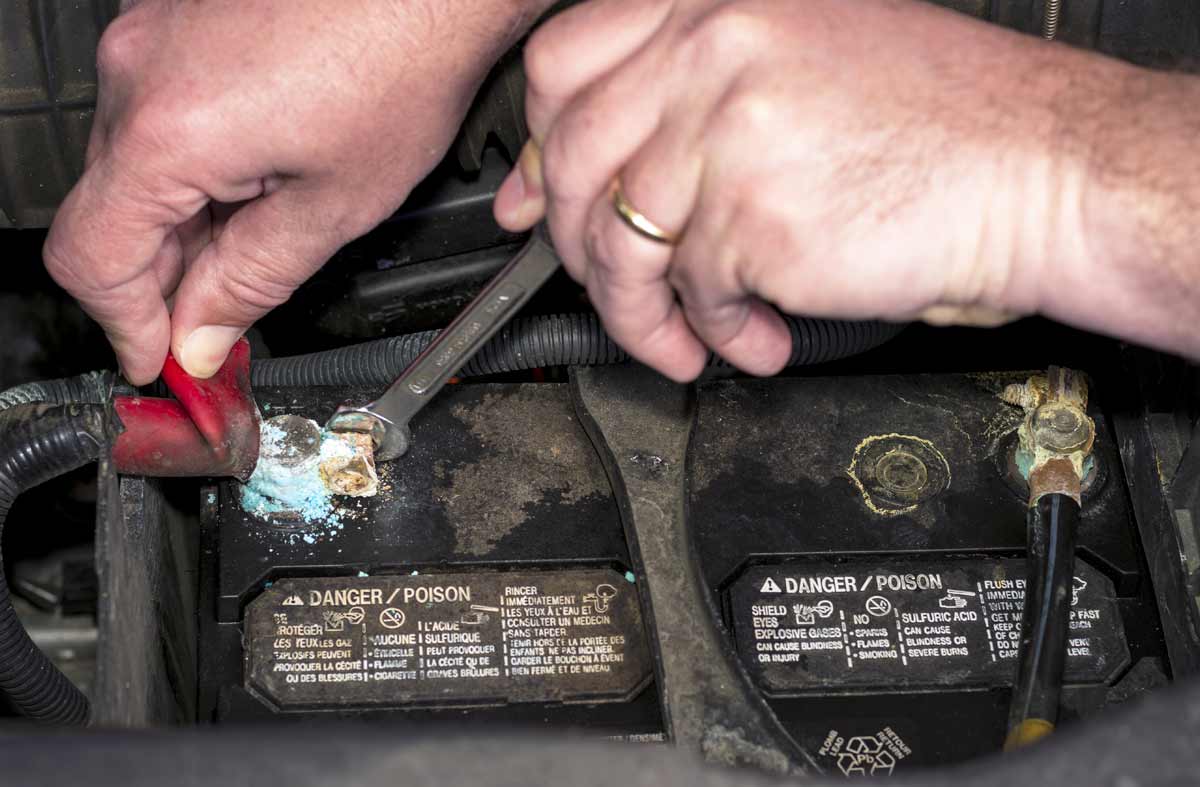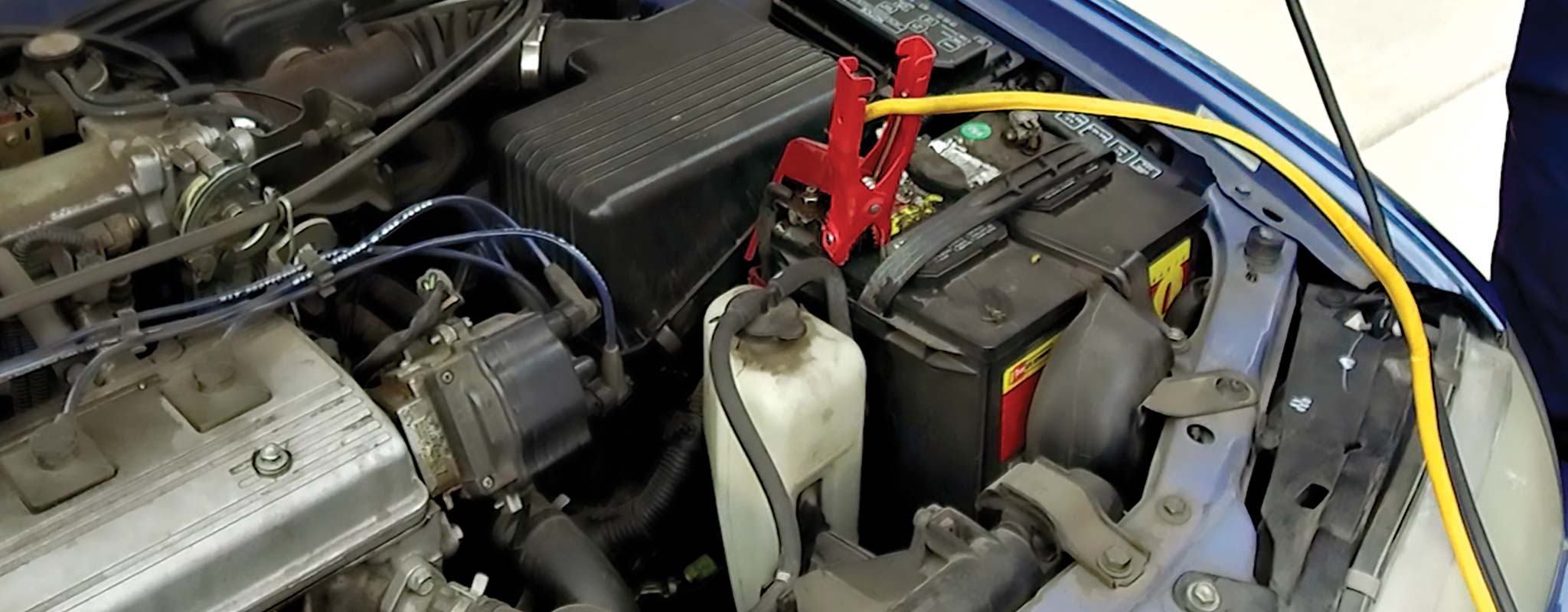Seasonal Car Battery Care: Why and How
An average car battery will last 4 to 5 years, maybe even up to 7. But where and how you drive and what the weather’s like in your area affect its life. Many short trips are harder on batteries than fewer, longer ones. In hot climates, you may only get 2 to 3 years out of a new battery.
Unless you’re having obvious trouble, you may just ignore it. But it’s a good idea to get your auto battery checked every fall. As cold weather arrives, the everyday work of starting up and powering your vehicle gets harder, and summer heat may have taken an invisible toll. Those battery problems you run into in the winter likely started in the summer.
What Does Summer Heat Do to a Car Battery?
Hot weather is the harshest environment for car batteries.
When it’s 90 or 95 degrees outside, it’s 140 to 150 degrees under your hood. These high temperatures can cause the water in your vehicle’s battery to evaporate. High heat can also force some of the fluid out of the battery vents in the form of gases. That will cause a chemical reaction with the lead and other metals on the battery connector. If you see corrosion that looks like white or blue crystals on the nodes with + and – signs (your battery terminals), that’s why.

The inside of a typical lead-acid car battery is like a layer cake made up of plates of lead and other components, with the “frosting” being a solution of about one-third sulfuric acid and two-thirds water. When some of that water evaporates or some sulfuric acid is forced out because it’s hot, there's not enough fluid to surround the plates. At that point, they start corroding.
About half of premature battery failures are caused by the loss of fluid in the battery. You may not see this damage, but it will reduce your battery’s efficiency.
Then there are the ways you use your vehicle in the summer. A battery can be pushed to its limit with demands from the engine cooling fan, air conditioning, stereo, and GPS or other gadgets you charge on your road trip. Deep discharges also speed up the battery’s aging. This can happen whenever you use the car’s electrical system while it’s turned off.
How to Take Care of Your Battery in Summer
Avoid deep discharges. It’s fun to park by a lake and listen to music through your car’s stereo and handy to charge your phone from the 12V socket while you’re camping, but draining the battery significantly can damage its internal parts.
Use the car regularly during heat waves. It’s not just cold weather that can damage a battery left unused — heat is harmful to sitting batteries, too. Park in the shade whenever possible. Keeping the temperature under the hood even a bit lower than it would otherwise be will slow fluid evaporation.
Speaking of battery fluid, faster evaporation in the warm months will increase corrosion. Clean any corrosion off the top of your battery once a year and make sure the cables are tightly connected. Corrosion is caustic, so make sure you wear gloves and proper eye protection to do this. Dissolve some baking soda in a bit of water and use a toothbrush to gently scrub the battery terminals and cable clamps.
Why Won’t the Car Start When It’s Cold Outside?
If it’s worked hard over summer, or the weather was really hot, your car’s battery may not be as efficient come fall, for the reasons above. If it’s not operating right it will have trouble holding a charge and delivering cranking power to the engine.
A telltale sign that your battery needs attention is if you notice your car is slow to turn over on chilly mornings but easier in the afternoon. This happens because all the fluids in your vehicle are thicker when temperatures are lower, like syrup that's straight out of the fridge versus warm. So it takes more power to move the motor oil required to crank the engine. Also, the chemical reactions that happen in the battery are slower in the cold.
With newer cars, you might not even have a slow start — your car simply won’t start.
Simply put, your vehicle’s systems need additional output from the battery to operate in colder conditions. If your battery is old, needs recharging, or isn't able to hold a charge, it will struggle to perform in the cold weather.
How to Take Care of Your Battery in Winter
First, get your battery tested in the fall, between summer heat and winter cold. A test will tell you if the battery is fully charged, how many cold cranking amps it can provide, and generally how healthy it is.
Keep a battery charger on hand and use it if you’re driving your vehicle less often in the cold months, you make frequent very short drives, or if you’re having trouble starting in the morning. If you live in a very cold climate where temps can get down to 5 degrees F, consider using a block heater or battery blanket.
A block heater will warm your engine so it's easier to start the car. A battery blanket will, as the name suggests, keep your battery warmer so the fluid keeps moving and it’s easier for the battery to crank the necessary amps when it’s cold out. Depending on where you live, you may want to use both these items — talk to a mechanic to figure out what you need.
Keep jumper cables in your car, as you’re more likely to need them in the winter.
Heading into the cold months, take a few minutes to clean corrosion off the top of your battery and make sure the cables are tightly connected.
We’ve said it twice, but it’s important enough to say one more time: Autumn is the time to get your battery checked to avoid irritating problems in the winter. If your vehicle’s battery is over 4 years old, it’s especially important to get it checked annually.
